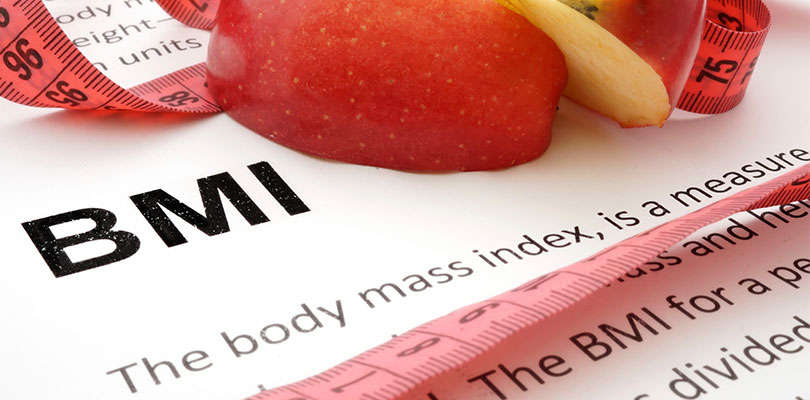Photo Credit: designer491 / iStockPhoto.com
The BMI System Is Inconclusive and Often Inaccurate
The system for measuring one’s body mass index (BMI) was first developed by Adolphe Quetelet, an ambitious Belgian scientist, in the 1830's. Since then, a lot has changed in the realm of health and medicine.
BMI is a number calculated based on your height and weight comparisons. It has become the resident method for determining healthy weight ranges for people of all shapes, sizes and ages.
Seemingly personalized to the person, new studies have proven that BMI measurements aren’t very custom at all. Studies out of the some of the world’s most respected names in medicine have concluded that BMI contains one major flaw: determining healthy weight is never a one-size-fits-all discussion.
Understanding BMI
This system is used to determine where an individual’s BMI falls on a scale meant to measure their health.
BMI of less than 18.5 places a person in the underweight category. Those who score between 18.5 and 24.9 are labeled “normal body weight.” Anyone whose range is 25.0 to 29.9 is overweight and anything over 30.0 determines obese persons.
Although BMI typically provides accurate readings, the flaws in its ability to accept variables may cause overestimation or underestimation of a person’s actual body fat. Experts now agree that BMI cannot be 100 percent accurate without taking a person’s fat to muscle ratio into account.
A Flaw in the System
Based on the current BMI system, bodybuilders, athletes, and other people who have acquired high masses of muscle will seem to be unhealthy. The weight of their muscle will cause many to be classified as obese on BMI scales, even though their bodies have a low percentage of actual fat.
University of Oxford mathematicians also argue the variations in people’s natural body structure. BMI models are incomplete, leaving shorter individuals to believe they are healthy and taller people feel they have an issue with their weight.
Those in support of this argument don’t believe the fat to muscle variable is as important in the obvious discrepancies in the current BMI scale.
Elderly individuals also suffer inconclusive BMI results. The existing system does not account for lost muscle mass and bone mass that occurs naturally with age. BMI calculations may tell them they are of a normal weight when they are actually overweight.
Calculating BMI
The original calculations were weight (translated into kilograms) divided by height (in inches) to the 2nd power.
However, according to some researchers, the most accurate way to determine BMI is, to begin with the person’s weight (translated into kilograms), multiply that by 1.3, then divide the answer by the person’s height to the power of 2.5.
Here is an example to show where BMI calculations may fall short:
A 6 ft. tall man who is inactive and never exercises may weigh 203 lbs. When his measurements are converted into the BMI formula – (92 kilograms)/(1.83 meters tall) – his BMI comes out at 27.
Conversely, you may look at a world champion athlete who is also 6 ft. tall, works out often, but weighs 211 lbs. Add that into BMI – (96 kilograms)/(1.83 meters tall) – our athlete would have a BMI of 28.
The first thing you need to know about common cold is that it is a virus and that there are over 100 different strains. So is it allergies or a cold?
Based on this scale, Usain Bolt, the fastest man on the planet, would be labeled overweight, even though the vigorous routine of a champion Olympian does not support that claim. BMI would lead us to believe an inactive couch potato is more physically fit than a world champion.
As you can see, the one-sized approach finds fault in its inability to calculate a person’s fat compared to muscle.
Overcoming the Flaws in BMI Calculations
Although it is often accurate, BMI scores are not absolute. For this reason, it should only be used as one of many tools to determine a person’s current health. According to recommendations from the National Institutes of Health (NIH), physicians should determine a person’s overweight status through three measures:
- BMI
- Waist circumference
- Risk factors for diseases associated with obesity: high blood pressure, high LDL cholesterol (bad cholesterol), low HDL cholesterol (good cholesterol), smoking and high blood sugar
Alternative Calculations
Each of the following are more precise methods, however, they aren’t always easily accessible:
- Some experts believe measuring body fat percentage is a more accurate indicator of healthy weight. Unfortunately, this is a difficult and costly option many cannot rely on.
- Skin-fold measurements require a technician to pinch a fold of skin on the patient’s body. This measures their subcutaneous lay of fat under the skin’s surface.
- Dual-energy X-ray absorptiometry (DEXA) measures bone density. This method takes into account the weight of bones, which BMI does not.
- Bioelectrical impedance gauges the amount of resistance applied to an electric current sent through the body. This creates low readings when the patient is lean and higher results when more fat is present.
Most people cannot walk in for these services at their primary care office. Those who may locate a trained specialist, may not have coverage to support it.
Waist to height ratio is an alternative to BMI measurements. Those who support this formula believe you can remain at a healthy weight if you manage to keep the circumference of your waist at less than half of their height.
Although less detailed and specific, this is a more cost-efficient and accessible means of measuring that can benefit people regardless of their financial situation or access to healthcare.
Should the BMI Formula Be Adjusted?
As long as obesity continues to plague the population from as early as nine months old, it will remain a heated topic of discussion. Health professionals and researchers may disagree on the methods used to track and measure this epidemic, but the urgency of the issue is undebatable.
Quetelet’s formula was devised over 100 years ago. Society has since advanced through various ages of information, application and technological development.
Since obesity was not a large concern in the 1840s, it’s safe to assume Quetelet’s formula did not take discrepancies we have since discovered into account.
Finding Your Ideal Weight
With so many variables in each argument, it’s easy to understand how someone may become frustrated with trying to find their own healthy weight limits, but doing so isn’t always black and white. It’d be great to have a number to hold in your head, but many things need to be considered when determining scaled perfection.
Overall health, height, bone density, body type, sex, age, and muscle to fat ratio all play a factor. BMI is handy when it comes to deciding on a general healthy range, but it is most effective when looking at the habits of larger populations opposed to individual circumstances.
Even with proven holes in the operation, BMI remains the preferred measurement for weight and obesity evaluation. It seems as if many doctors opt for the “why fix what isn’t broken?” approach because it’s quick, easy and convenient. They can complete the quick equation while the patient is still sitting in their office and determine whether their risk is high or low for weight-related health problems.
Although many people are inaccurately classified as overweight when other methods label them obese, as a preventative measure, most physicians begin offering a recommendation as if obesity was imminent.
Alternative methods work, in their own respect, but medical science has yet to pinpoint a definitive source. For now, it seems as if the best results come when you combine a little bit of them all. Concentrate on being healthy, rather than what the scale says, and you shouldn’t go wrong either way.







